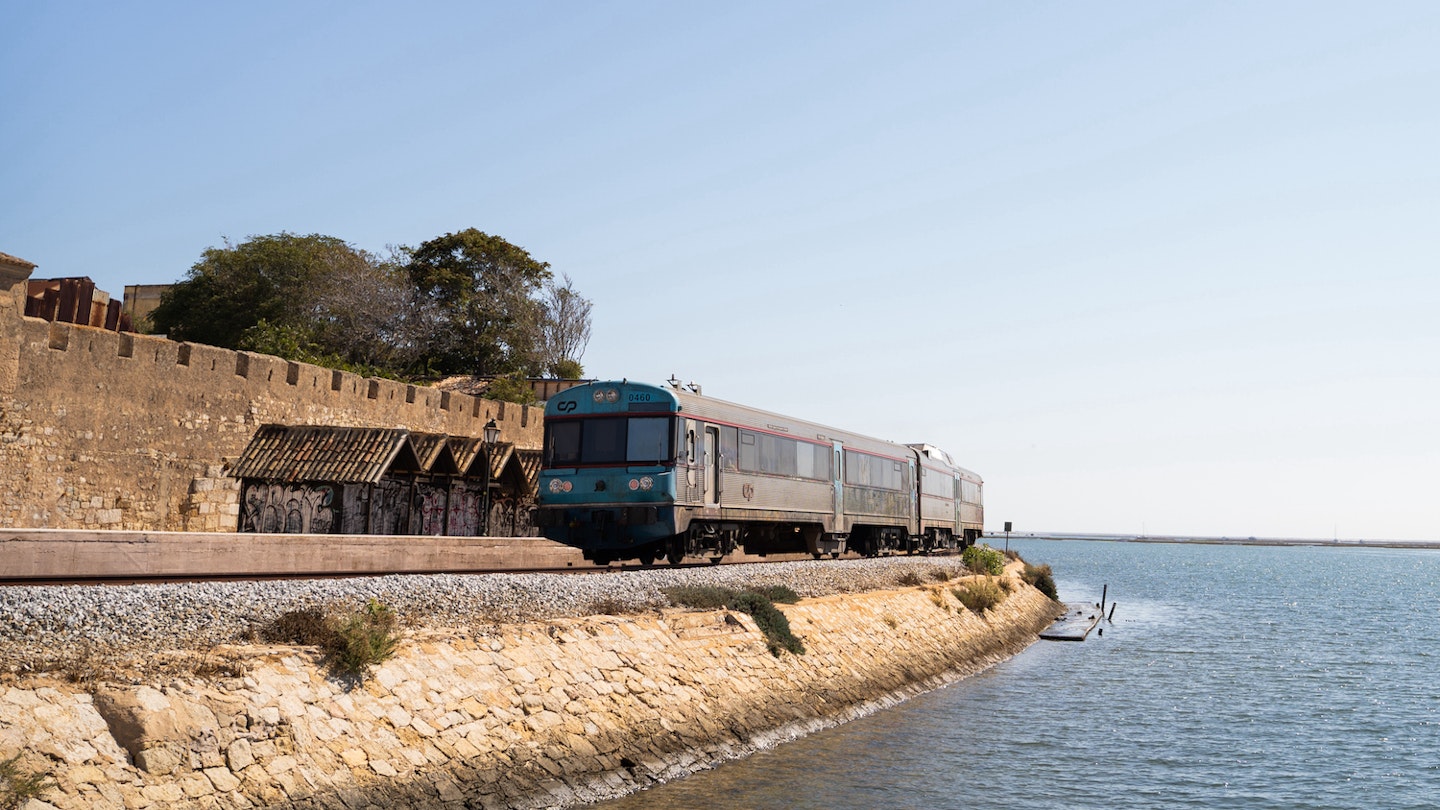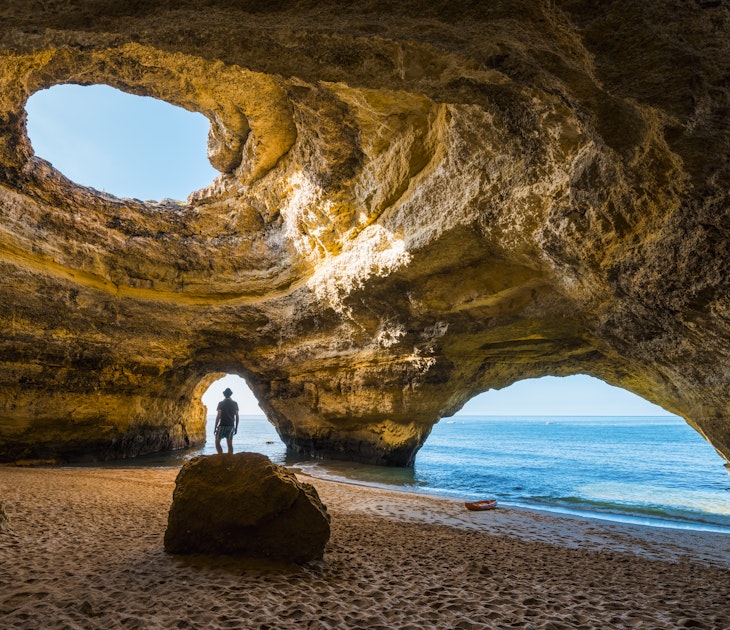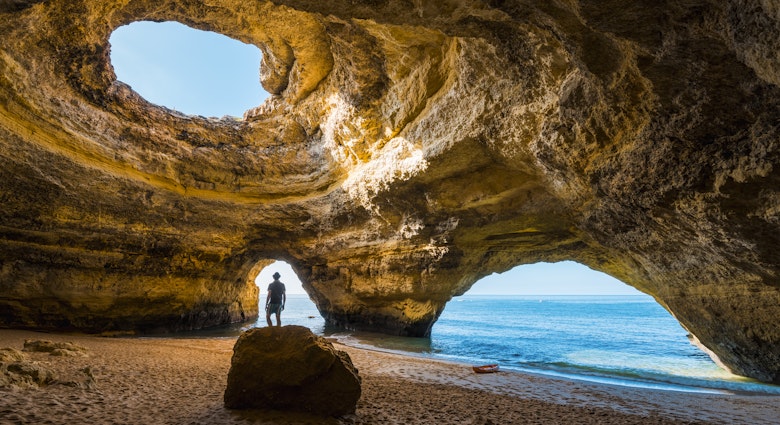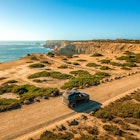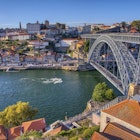While many visitors jet into Faro and hire a rental car for the duration of their stay, there are plenty of other ways of getting around the Algarve.
You can enjoy the scenery rolling (slowly) past on the train, breathe in the salt-tinged air while cycling along the seaside or get just about anywhere via the region’s new integrated bus system. Taxis (and rideshares), as well as ferries, also play a role in the Algarve’s transportation network. Consider the pros and cons as you read more about how to get around the Algarve.
Drive along the back roads in a rental car
Navigating the Algarve by car is fairly easy, with generally good road conditions and signage to help you find your way. Rentals are generally inexpensive in Portugal, and given the short distances involved, you’re unlikely to spend a lot on fuel. If you want to reduce your carbon footprint, consider renting an electric vehicle: Europcar rents the all-electric Nissan Leaf from various locations, including Faro airport.
The downside to driving is the parking situation, which can be difficult in the resort areas in the summertime, as lots quickly fill to capacity. To avoid driving into narrow town centers, plan to park on the outskirts and walk to your destination.
It’s fairly safe to drive around the Algarve, as local drivers aren’t particularly aggressive. Car break-ins, however, do occur, so leave nothing of value in the vehicle – and that includes luggage left in the trunk.
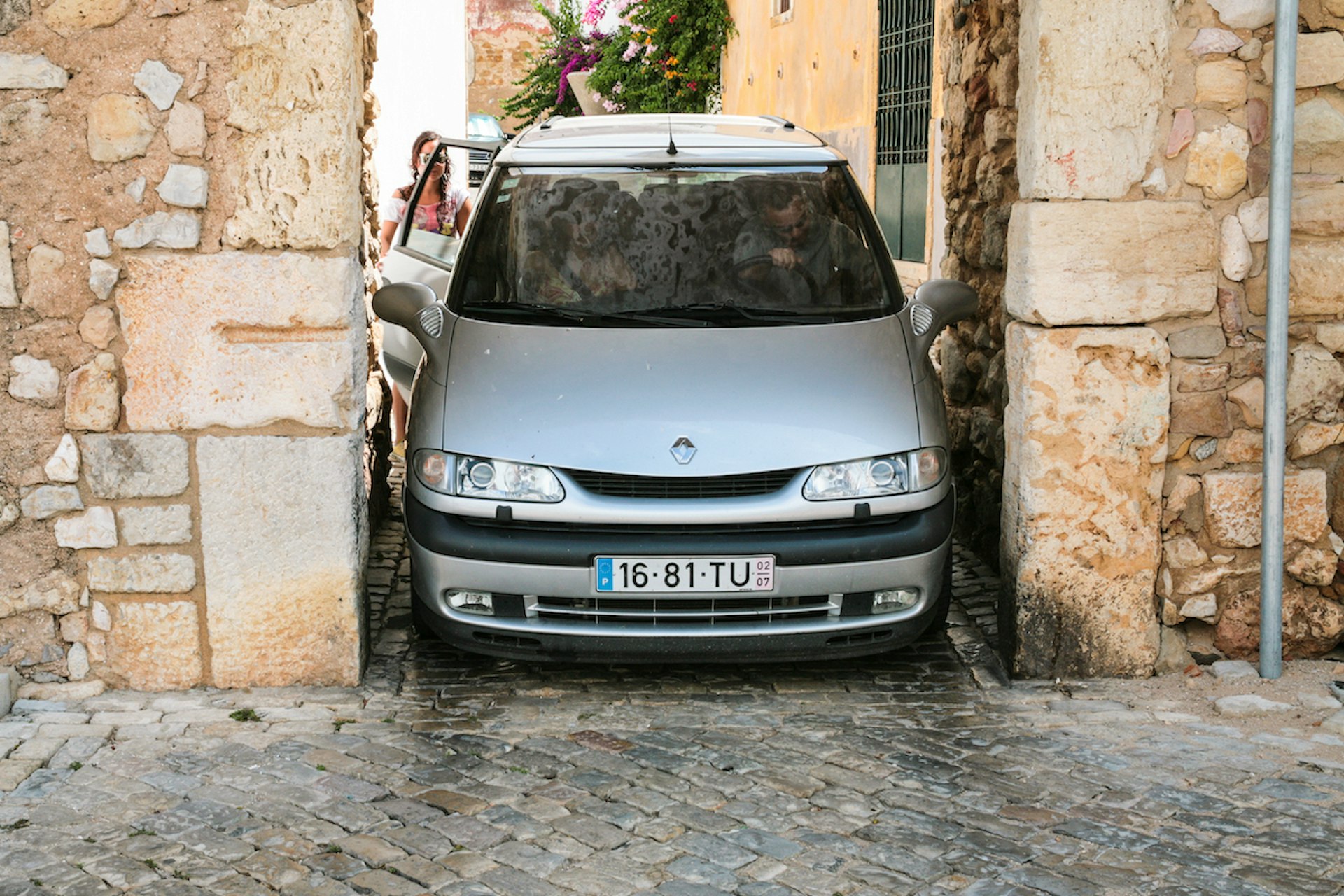
Avoid (or embrace!) the toll road
The fastest road across the Algarve is the A22, which runs from just north of Lagos to the Spanish border. It’s an electronic toll road, so you’ll need to make sure you rent an electronic transponder when you hire your vehicle (these are available from all car rental companies). If you’re driving your own car, you can rent a transponder from Faro airport or from any post office, as well as from a kiosk near the Spanish border. If you’re not in a hurry, skip the autoroute and stick to the free N125, which runs from Vila do Bispo to Vila Real de Santo António.
Enjoy the slow but scenic journey aboard the train
Riding the rails on Portugal’s small but reliable train network is one of the best ways to see the country’s beautiful landscapes. If you’re coming from Lisbon, you can take the train to the Algarve via the inland town of Tunes. Within the Algarve, trains stop at over a dozen stations between Lagos and Vila Real de Santo António; it’s particularly handy for getting between major towns like Faro and Tavira. Note that some stations aren’t right in the town centers – Albufeira station, for instance, is 5.5km (3.4mi) north of the village center, and you’ll have to take a connecting bus to get to the seaside.

Look for dolphins on board the ferry
You can glide across the water with seabirds winging past as you travel to several destinations in the Algarve that are reachable by ferry. Off the coast of Olhão, Ilha da Culatra and Ilha da Armona can be reached only by ferry (from both Olhão and Faro), while boats also provide the best access to nearby Ilha Deserta (from Faro) and Ilha de Tavira (from Tavira and Quatro Aguas). You can also catch a ferry from Lagos over to the seaside action on Meia Praia, saving you a long walk or bus ride. Wherever you go, rates are reasonable, typically around €3 to €6 ($3.20 to $6.40) for a round-trip ticket.
Take advantage of the Algarve’s smart new bus network
The Algarve unveiled Vamus Algarve, a new bus service, in late 2021 – and it’s a huge leap forward in terms of service and ease of use. The extensive network covers just about every part of the Algarve and offers speedy transport from the Faro airport (the 56 Aerobus) to towns like Albufeira, Portimão and Lagos. You can find routes and timetables online or on the app; you can purchase tickets directly from bus drivers or with the app. The special summertime-only 52 Eva Cliffs line stops at scenic beaches (like Praia da Marinha and Praia Benagil) not normally accessible by public transport. If you plan to travel a lot by bus, Vamus Algarve sells passes that cover unlimited travel on the network for three days and seven days (respectively, €35 and €45/$37.50 and $48).
Taxis and rideshares are ideal for short trips
If you’re just heading a few kilometers out of town, you can get there quickly by using ride-sharing apps like Uber and Bolt (previously called Taxify). Many towns also have a taxi stand, and the rates for taxis tend to be only slightly higher than using a rideshare service. Both taxis and rideshares are available in bigger towns and resort areas, like Faro, Albufeira and Lagos, but service isn’t easy to come by in more rural areas.

Take in the breezy views while cycling off the beaten path
At towns all across the Algarve, you can rent bicycles for an all-day excursion or a spin out to nearby beaches. Portuguese drivers are generally mindful of cyclists, though coastal roads can be too busy with traffic to make for an enjoyable ride. Instead, head to the back roads just north of the coast. The Algarve’s tourism authority has an excellent selection of over 40 different cycling itineraries with maps available online.
Accessible travel in the Algarve
Alas, the Algarve is not a very accessible destination for travelers with mobility issues. Most buses do not have ramps for wheelchairs, and those that do don't always function properly. Trains are also not accessible (nor are most stations) as they have steps up into the cars. Some 48 beaches are accessible to travelers, with ramps, handrails and accessible toilets, and some also have an amphibious wheelchair. Find a complete list here.
Why the train is my favorite way to travel in the Algarve
Traveling by rail in the Algarve takes you through countryside that you won’t experience on the motorway. On a day’s journey, I love seeing the landscape’s subtle transitions while rolling through the coastline outside of Lagos, across the sparkling Rio Arade near Portimão, amid the rolling hills near Silves and over the salt marshes beyond Olhão.
The train also offers glimpses of local life as you watch kids heading home from school and families on outings to the beach, along with visitors from all across the globe. Though the train doesn’t stop at very many coastal towns, this is part of its charm, as it gives you an opportunity to explore parts of the Algarve little seen by most travelers.

